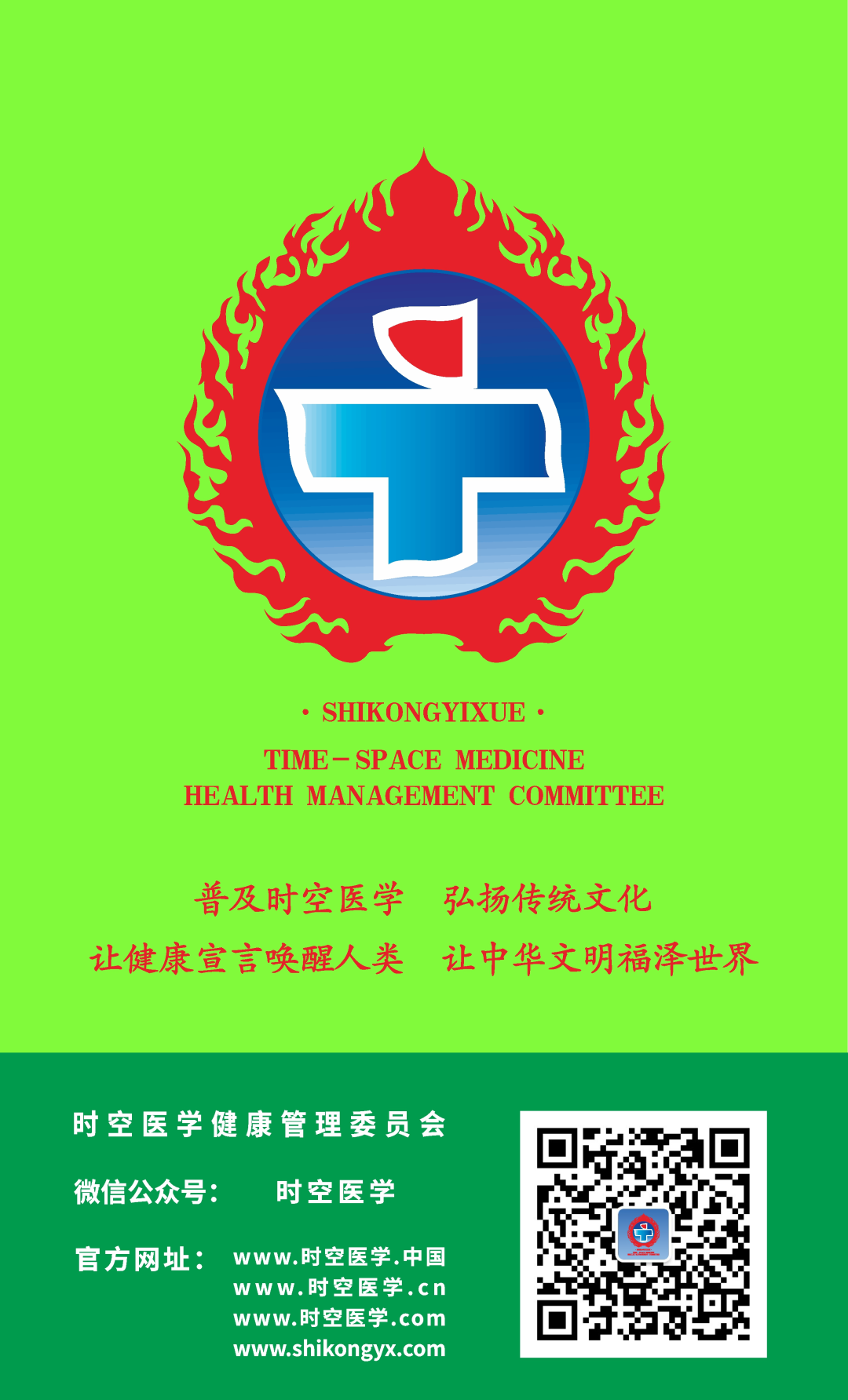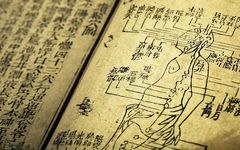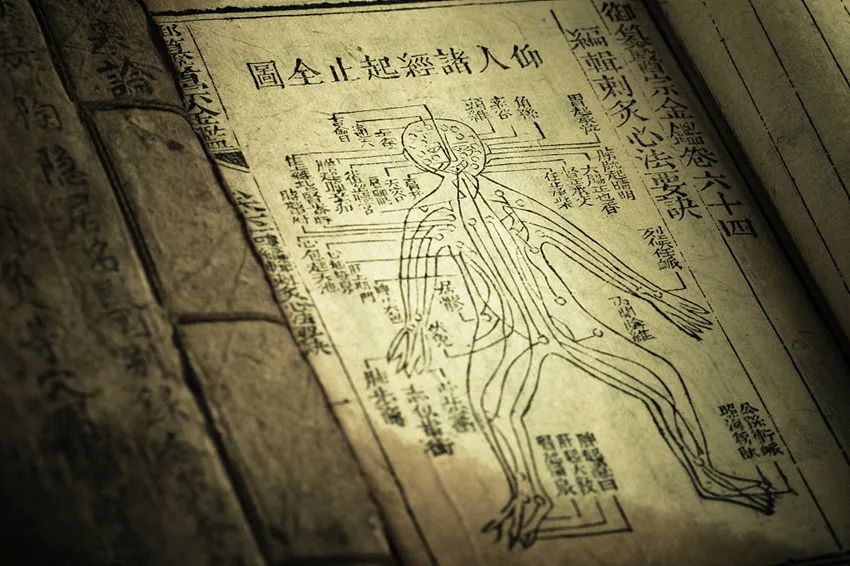 1The Qi Jing Ba Mai (Eight Extraordinary Meridians) consists of the Du Mai (Governing Vessel), Ren Mai (Conception Vessel), Chong Mai (Penetrating Vessel), Dai Mai (Belt Vessel), Yang Wei Mai (Yang Linking Vessel), Yin Wei Mai (Yin Linking Vessel), Yang Qiao Mai (Yang Heel Vessel), and Yin Qiao Mai (Yin Heel Vessel). This system is distinct from the twelve regular meridians and represents a significant discovery from ancient times, although its immense value has yet to be fully recognized in the medical community. Because it does not conform to the twelve meridians, there is no mutual relationship of exterior and interior, nor does it connect with the organs, and its functions vary, it is thus termed ‘extraordinary’. Li Shizhen in his work Qi Jing Ba Mai Kao states: “The regular meridians are like ditches, while the extraordinary meridians are like lakes. When the qi and blood of the regular meridians are abundant, they overflow into the extraordinary meridians. Thus, it is likened to rain falling from the sky, filling the ditches, and overflowing into the lakes.” This passage is commonly understood to mean that the function of the Eight Extraordinary Meridians is to regulate the qi and blood of the twelve regular meridians; when the qi and blood of the twelve are excessive, they flow into the extraordinary meridians for storage, and when they are deficient, the extraordinary meridians ‘overflow’ to replenish them. However, this is only one aspect. The Eight Extraordinary Meridians also have another important aspect, which Li Shizhen mentioned but has been overlooked by later generations, which is: “The Eight Meridians are scattered in various texts, but are not fully understood. If physicians do not know this, they will fail to explore the mechanisms of disease; if immortals do not know this, they will find it difficult to stabilize their alchemical furnace… Therefore, if a physician understands the Eight Meridians, they will grasp the essence of the twelve meridians and fifteen collaterals. If an immortal understands the Eight Meridians, they will grasp the subtle mysteries of the rising and falling of the dragon and tiger, and the profound secrets of the mysterious female.” What is meant by the ‘rising and falling of the dragon and tiger’? Daoist guidance techniques suggest that: the red dragon represents the tongue; by stirring the tongue within the mouth and along the cheeks, one waits for saliva to form and swallow. Rinse the saliva thirty-six times, the divine water fills the mouth evenly, and swallow in three parts, as the dragon rises and the tiger descends. In other words, the rising of the mouth’s liquid is the dragon, while the sound of saliva descending is the qi descending as the tiger. The Essentials of Longevity states: “When waking up, sit up straight, concentrate and calm your thoughts, lick the upper palate with your tongue, close your mouth and regulate your breath, allowing saliva to form until the mouth is full, and swallow in three parts. If practiced for a long time, the evil fire of the five organs will not flare up, the qi and blood of the limbs will flow smoothly, diseases will not arise, and future troubles will be eliminated, allowing one to grow old without decline.” In modern terms, Daoism studies life sciences, discussing cultivation and meditation, and the ‘furnace’ (referring to the alchemical furnace, a metaphor for the method of refining the golden elixir. The inner elixir uses the mud pill as the upper furnace and the elixir field as the lower furnace). In this sense, the Eight Extraordinary Meridians have a special ‘qi transformation’ relationship with important organs such as the kidneys, liver, brain, and marrow—its relationship with the twelve meridians is not merely that of a ‘reservoir’; rather, it accurately represents the relationship between pre-natal and post-natal! The Eight Extraordinary Meridians system discusses pre-natal, while the twelve meridians system discusses post-natal. There is a poem that goes: Originally, the Du and Ren are within the body, seeking the immortal source has a path to follow; separating the realms of yin and yang, adjusting the Chong and operating the Dai furnace red.
1The Qi Jing Ba Mai (Eight Extraordinary Meridians) consists of the Du Mai (Governing Vessel), Ren Mai (Conception Vessel), Chong Mai (Penetrating Vessel), Dai Mai (Belt Vessel), Yang Wei Mai (Yang Linking Vessel), Yin Wei Mai (Yin Linking Vessel), Yang Qiao Mai (Yang Heel Vessel), and Yin Qiao Mai (Yin Heel Vessel). This system is distinct from the twelve regular meridians and represents a significant discovery from ancient times, although its immense value has yet to be fully recognized in the medical community. Because it does not conform to the twelve meridians, there is no mutual relationship of exterior and interior, nor does it connect with the organs, and its functions vary, it is thus termed ‘extraordinary’. Li Shizhen in his work Qi Jing Ba Mai Kao states: “The regular meridians are like ditches, while the extraordinary meridians are like lakes. When the qi and blood of the regular meridians are abundant, they overflow into the extraordinary meridians. Thus, it is likened to rain falling from the sky, filling the ditches, and overflowing into the lakes.” This passage is commonly understood to mean that the function of the Eight Extraordinary Meridians is to regulate the qi and blood of the twelve regular meridians; when the qi and blood of the twelve are excessive, they flow into the extraordinary meridians for storage, and when they are deficient, the extraordinary meridians ‘overflow’ to replenish them. However, this is only one aspect. The Eight Extraordinary Meridians also have another important aspect, which Li Shizhen mentioned but has been overlooked by later generations, which is: “The Eight Meridians are scattered in various texts, but are not fully understood. If physicians do not know this, they will fail to explore the mechanisms of disease; if immortals do not know this, they will find it difficult to stabilize their alchemical furnace… Therefore, if a physician understands the Eight Meridians, they will grasp the essence of the twelve meridians and fifteen collaterals. If an immortal understands the Eight Meridians, they will grasp the subtle mysteries of the rising and falling of the dragon and tiger, and the profound secrets of the mysterious female.” What is meant by the ‘rising and falling of the dragon and tiger’? Daoist guidance techniques suggest that: the red dragon represents the tongue; by stirring the tongue within the mouth and along the cheeks, one waits for saliva to form and swallow. Rinse the saliva thirty-six times, the divine water fills the mouth evenly, and swallow in three parts, as the dragon rises and the tiger descends. In other words, the rising of the mouth’s liquid is the dragon, while the sound of saliva descending is the qi descending as the tiger. The Essentials of Longevity states: “When waking up, sit up straight, concentrate and calm your thoughts, lick the upper palate with your tongue, close your mouth and regulate your breath, allowing saliva to form until the mouth is full, and swallow in three parts. If practiced for a long time, the evil fire of the five organs will not flare up, the qi and blood of the limbs will flow smoothly, diseases will not arise, and future troubles will be eliminated, allowing one to grow old without decline.” In modern terms, Daoism studies life sciences, discussing cultivation and meditation, and the ‘furnace’ (referring to the alchemical furnace, a metaphor for the method of refining the golden elixir. The inner elixir uses the mud pill as the upper furnace and the elixir field as the lower furnace). In this sense, the Eight Extraordinary Meridians have a special ‘qi transformation’ relationship with important organs such as the kidneys, liver, brain, and marrow—its relationship with the twelve meridians is not merely that of a ‘reservoir’; rather, it accurately represents the relationship between pre-natal and post-natal! The Eight Extraordinary Meridians system discusses pre-natal, while the twelve meridians system discusses post-natal. There is a poem that goes: Originally, the Du and Ren are within the body, seeking the immortal source has a path to follow; separating the realms of yin and yang, adjusting the Chong and operating the Dai furnace red.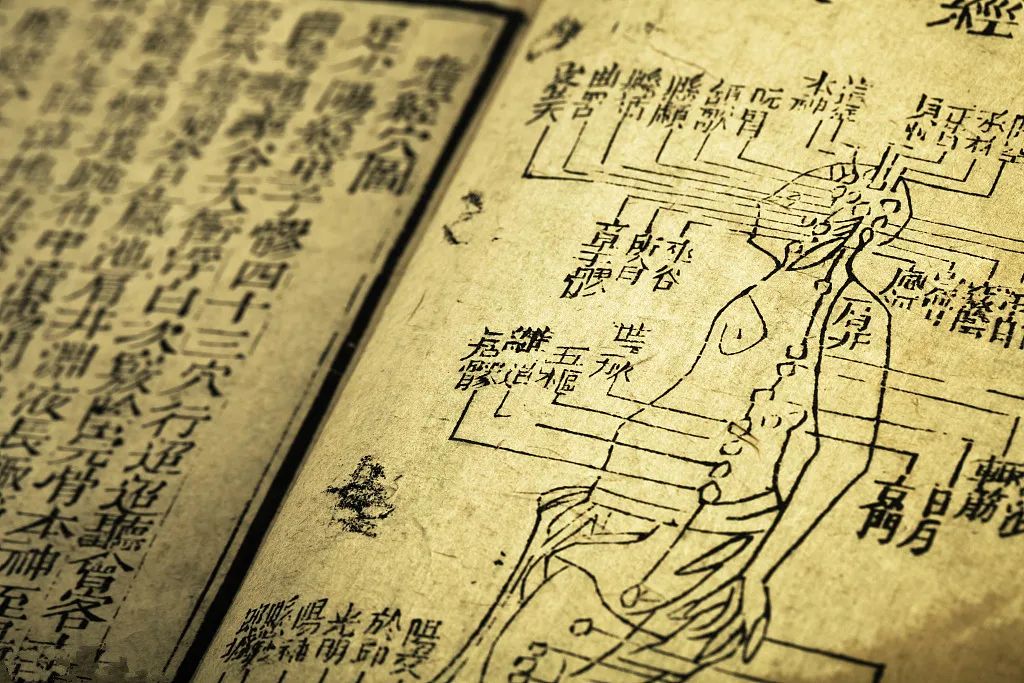 2Daoist inner alchemy builds the foundation (i.e., the base for calming the spirit and stabilizing the breath) through qigong, discussing the Ren and Du meridians in the small heavenly cycle, as well as the twelve meridians in the large heavenly cycle. Based on the essence, qi, and spirit, refining essence into qi, refining qi into spirit, refining spirit back to emptiness, and refining emptiness to unite with the Dao—original essence must be combined with original qi to transform into a substance of refined qi. It is understood that authentic alchemical practices emphasize ‘opening the perineum’ (rather than the Mingmen), which means opening the Yin Qiao reservoir and then circulating through the Ren and Du meridians—this is the fundamental principle of health and even longevity. Li Shizhen in Qi Jing Ba Mai Kao quotes Zhang Ziyang‘s Eight Meridians Classic stating: “All humans possess these eight meridians, which belong to the yin spirit, closed and not opened; only the immortals can open them with yang qi, thus they can attain the Dao. The eight meridians are the root of the pre-natal great way, the ancestor of the one qi. The first to be activated is the Yin Qiao, as this meridian must move for all others to connect. Next are the Du, Ren, and Chong meridians, which are the source of the transformation of the meridians…” This is a profound discussion of Daoist methods! Daoism discusses cultivation, and ancient physicians also devoted themselves to this path, as seen in the opening of the Suwen in the Discussion on the True Nature of Ancient Saints, which states: “The teachings of the ancient sages warned against the ‘evil winds of emptiness’, to avoid them at times; tranquility and emptiness lead to true qi; the spirit guards within, and where does illness come from?” Guangya: tranquility means stillness; Shuowen: emptiness means peace. Emptiness, as explained in the internal classics, refers to ‘thoughts being quiet, the heart free of distractions’? In fact, these four words describe internal cultivation: tranquility, which means entering stillness; emptiness, which is a vague state but still has traces to be found; void, which is formless, gradually entering a state of daze; and nothingness, which is the highest realm. Therefore, ‘tranquility, emptiness, and nothingness’ originally describes the cultivation process from stillness to emptiness to void, which is the true essence of life for both medicine and Dao. Thus, I believe that studying the Eight Extraordinary Meridians and the Twelve Regular Meridians from the perspectives of pre-natal and post-natal has significant clinical value. For patients with congenital developmental deficiencies, certain chronic wasting diseases, severe organ dysfunction, brain diseases, and mental disorders, blood diseases, and even some hereditary diseases (including tumors), one can consider the pre-natal factors and use medications, prescriptions, and acupuncture points based on the Eight Extraordinary Meridians. Why do the intersection points of the eight meridians have such powerful effects? A robust man weighing over two hundred pounds, due to a certain posture during activity, suffers from severe back pain and cannot turn; merely needling the small Houxi (Back Stream) point, and within minutes, the pain rapidly alleviates. Why is the effect so remarkable? It is because this point can connect the Du Yang and Ju Yang, and it stimulates the true yang of pre-natal essence! This power is formidable! To study medicine, one must understand the Dao; for example, why does the Zi Wu Liu Zhu (Clockwise Flow of Qi) and Ling Gui Ba Fa (Eight Methods of the Spirit Turtle) in acupuncture have higher efficacy than general differentiation or meridian point selection? This is because this Dao highly reveals the cyclical correspondence between humans and the external world, while also revealing the intercommunication between pre-natal and post-natal within the human body. The Zi Wu Liu Zhu discusses the post-natal twelve meridians’ Jing, Ying, Yuan meridians matching with the five Yuan points, while the Ling Gui Ba Fa specifically discusses the eight points of the pre-natal meridians. Thus, this acupuncture method can be likened to a practice that is ‘vast as the universe, yet fine as the autumn hair’. In clinical practice, combining both methods to select points at the right time, observing and accumulating case data from the perspectives of pre-natal and post-natal, and summarizing regular patterns would be a very meaningful research topic.
2Daoist inner alchemy builds the foundation (i.e., the base for calming the spirit and stabilizing the breath) through qigong, discussing the Ren and Du meridians in the small heavenly cycle, as well as the twelve meridians in the large heavenly cycle. Based on the essence, qi, and spirit, refining essence into qi, refining qi into spirit, refining spirit back to emptiness, and refining emptiness to unite with the Dao—original essence must be combined with original qi to transform into a substance of refined qi. It is understood that authentic alchemical practices emphasize ‘opening the perineum’ (rather than the Mingmen), which means opening the Yin Qiao reservoir and then circulating through the Ren and Du meridians—this is the fundamental principle of health and even longevity. Li Shizhen in Qi Jing Ba Mai Kao quotes Zhang Ziyang‘s Eight Meridians Classic stating: “All humans possess these eight meridians, which belong to the yin spirit, closed and not opened; only the immortals can open them with yang qi, thus they can attain the Dao. The eight meridians are the root of the pre-natal great way, the ancestor of the one qi. The first to be activated is the Yin Qiao, as this meridian must move for all others to connect. Next are the Du, Ren, and Chong meridians, which are the source of the transformation of the meridians…” This is a profound discussion of Daoist methods! Daoism discusses cultivation, and ancient physicians also devoted themselves to this path, as seen in the opening of the Suwen in the Discussion on the True Nature of Ancient Saints, which states: “The teachings of the ancient sages warned against the ‘evil winds of emptiness’, to avoid them at times; tranquility and emptiness lead to true qi; the spirit guards within, and where does illness come from?” Guangya: tranquility means stillness; Shuowen: emptiness means peace. Emptiness, as explained in the internal classics, refers to ‘thoughts being quiet, the heart free of distractions’? In fact, these four words describe internal cultivation: tranquility, which means entering stillness; emptiness, which is a vague state but still has traces to be found; void, which is formless, gradually entering a state of daze; and nothingness, which is the highest realm. Therefore, ‘tranquility, emptiness, and nothingness’ originally describes the cultivation process from stillness to emptiness to void, which is the true essence of life for both medicine and Dao. Thus, I believe that studying the Eight Extraordinary Meridians and the Twelve Regular Meridians from the perspectives of pre-natal and post-natal has significant clinical value. For patients with congenital developmental deficiencies, certain chronic wasting diseases, severe organ dysfunction, brain diseases, and mental disorders, blood diseases, and even some hereditary diseases (including tumors), one can consider the pre-natal factors and use medications, prescriptions, and acupuncture points based on the Eight Extraordinary Meridians. Why do the intersection points of the eight meridians have such powerful effects? A robust man weighing over two hundred pounds, due to a certain posture during activity, suffers from severe back pain and cannot turn; merely needling the small Houxi (Back Stream) point, and within minutes, the pain rapidly alleviates. Why is the effect so remarkable? It is because this point can connect the Du Yang and Ju Yang, and it stimulates the true yang of pre-natal essence! This power is formidable! To study medicine, one must understand the Dao; for example, why does the Zi Wu Liu Zhu (Clockwise Flow of Qi) and Ling Gui Ba Fa (Eight Methods of the Spirit Turtle) in acupuncture have higher efficacy than general differentiation or meridian point selection? This is because this Dao highly reveals the cyclical correspondence between humans and the external world, while also revealing the intercommunication between pre-natal and post-natal within the human body. The Zi Wu Liu Zhu discusses the post-natal twelve meridians’ Jing, Ying, Yuan meridians matching with the five Yuan points, while the Ling Gui Ba Fa specifically discusses the eight points of the pre-natal meridians. Thus, this acupuncture method can be likened to a practice that is ‘vast as the universe, yet fine as the autumn hair’. In clinical practice, combining both methods to select points at the right time, observing and accumulating case data from the perspectives of pre-natal and post-natal, and summarizing regular patterns would be a very meaningful research topic.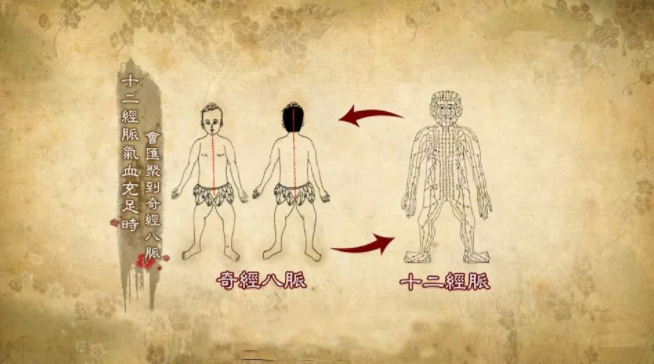 3The Eight Extraordinary Meridians were first mentioned in the Neijing (Inner Canon), and later elaborated in the Nanjing in the ‘Twenty-Sixth Difficulties’ to ‘Twenty-Ninth Difficulties’. The most comprehensive discussion of the theory and practice of the Eight Extraordinary Meridians is found in Li Shizhen‘s Qi Jing Ba Mai Kao. This short book is indeed genuine and valuable. Particularly noteworthy is that through this book, it can be proven that Li Shizhen was also a master of Daoist methods, with profound experiences in internal cultivation; otherwise, such a book could not have been written. For example: “Li Pinghu said: The Ren and Du meridians are the children of the body, the Zi and Wu. They are the path of the ascent and descent of the yang fire and yin symbol of the alchemists, the place where the Kan water and Li fire interact. Therefore, Wei Boyang in the Can Tong Qi states: ‘When the upper is closed, it is called existence; when the lower is closed, it is called non-existence. Non-existence serves the upper, and the upper has divine virtue residing. These two orifices are the methods of the golden qi that also depend on each other.’ Cui Xifan in the Tian Yuan Ru Yao Jing states: ‘Upper magpie bridge, lower magpie bridge, heaven responds to stars, earth responds to tides; returning to the root orifice, restoring the life gate, connecting the tailbone, and passing through the mud pill.’ Da Dao San Zhang Zhi Zhi states: ‘For those who cultivate the elixir, there is a single orifice in the body, called the Xuan Pin. It is located beneath Qian and above Kun, to the west of Zhen and to the east of Dui, at the center of the human body and the universe, where the eight meridians, nine orifices, twelve meridians, and fifteen collaterals converge, with a void orifice suspended like a pearl. Medical texts refer to this as the Ren and Du meridians. This is where original qi is born, where true breath arises; if those who cultivate the elixir do not understand this orifice, then true breath will not arise, and spiritual transformation will have no foundation.’ Yu Yan annotates Can Tong Qi stating: ‘The blood and qi of the human body circulate continuously, day and night without stopping; medical texts mention the Ren and Du meridians, and if one can connect these two meridians, then all meridians will be connected.’…” The tailbone valley path, one solid and one void, is thus named the lower magpie bridge; the upper magpie bridge is formed by the three orifices above the tailbone, which are filled with marrow, obstructing breathing; the two orifices below the nose are void yet open. This is the pathway for breathing. The orifice between the eyebrows and the nasal orifice, one solid and one void, is thus named the upper magpie bridge. Li Shizhen’s integration of medical and Daoist theories to study the Eight Extraordinary Meridians has significant implications for the treatment of complex diseases and difficult conditions. In contemporary TCM, there are special efforts to address brain diseases, hepatitis B, AIDS, and other deep mechanisms; it may be worthwhile to study the Eight Extraordinary Meridians. I believe it is worth the TCM community to shift their thinking and pay attention to this. Source: Internet
3The Eight Extraordinary Meridians were first mentioned in the Neijing (Inner Canon), and later elaborated in the Nanjing in the ‘Twenty-Sixth Difficulties’ to ‘Twenty-Ninth Difficulties’. The most comprehensive discussion of the theory and practice of the Eight Extraordinary Meridians is found in Li Shizhen‘s Qi Jing Ba Mai Kao. This short book is indeed genuine and valuable. Particularly noteworthy is that through this book, it can be proven that Li Shizhen was also a master of Daoist methods, with profound experiences in internal cultivation; otherwise, such a book could not have been written. For example: “Li Pinghu said: The Ren and Du meridians are the children of the body, the Zi and Wu. They are the path of the ascent and descent of the yang fire and yin symbol of the alchemists, the place where the Kan water and Li fire interact. Therefore, Wei Boyang in the Can Tong Qi states: ‘When the upper is closed, it is called existence; when the lower is closed, it is called non-existence. Non-existence serves the upper, and the upper has divine virtue residing. These two orifices are the methods of the golden qi that also depend on each other.’ Cui Xifan in the Tian Yuan Ru Yao Jing states: ‘Upper magpie bridge, lower magpie bridge, heaven responds to stars, earth responds to tides; returning to the root orifice, restoring the life gate, connecting the tailbone, and passing through the mud pill.’ Da Dao San Zhang Zhi Zhi states: ‘For those who cultivate the elixir, there is a single orifice in the body, called the Xuan Pin. It is located beneath Qian and above Kun, to the west of Zhen and to the east of Dui, at the center of the human body and the universe, where the eight meridians, nine orifices, twelve meridians, and fifteen collaterals converge, with a void orifice suspended like a pearl. Medical texts refer to this as the Ren and Du meridians. This is where original qi is born, where true breath arises; if those who cultivate the elixir do not understand this orifice, then true breath will not arise, and spiritual transformation will have no foundation.’ Yu Yan annotates Can Tong Qi stating: ‘The blood and qi of the human body circulate continuously, day and night without stopping; medical texts mention the Ren and Du meridians, and if one can connect these two meridians, then all meridians will be connected.’…” The tailbone valley path, one solid and one void, is thus named the lower magpie bridge; the upper magpie bridge is formed by the three orifices above the tailbone, which are filled with marrow, obstructing breathing; the two orifices below the nose are void yet open. This is the pathway for breathing. The orifice between the eyebrows and the nasal orifice, one solid and one void, is thus named the upper magpie bridge. Li Shizhen’s integration of medical and Daoist theories to study the Eight Extraordinary Meridians has significant implications for the treatment of complex diseases and difficult conditions. In contemporary TCM, there are special efforts to address brain diseases, hepatitis B, AIDS, and other deep mechanisms; it may be worthwhile to study the Eight Extraordinary Meridians. I believe it is worth the TCM community to shift their thinking and pay attention to this. Source: Internet